Hot And Cold Water Wash: Best Laundry Washing Choice?
Doing laundry might seem simple, but the debate between using hot or cold water can be a real head-scratcher. You’re likely wondering: Will cold water really get my clothes clean? Does hot water damage fabrics? What about energy bills? These are all valid concerns! This article dives deep into the hot vs. cold water washing debate.
We’ll equip you with the knowledge to make informed laundry decisions. You’ll discover the benefits of each approach, learn how to interpret those cryptic care labels, and ultimately choose the best method for every load, leading to cleaner clothes, lower energy consumption, and longer-lasting garments.
1. The benefits of cold water washing
Cold water washing is often overlooked, but it presents numerous advantages for your clothes, your wallet, and the environment. Let’s explore these benefits in detail:
1.1 Saving energy and money
This is arguably the biggest draw of cold water washing. The vast majority of energy used by your washing machine goes towards heating the water. According to Energy Star, about 90% of the energy consumption is linked directly to the water heater. By switching to cold water, you drastically reduce this energy usage. This translates to lower utility bills and a smaller carbon footprint.
1.2 Protecting your clothes
Hot water can be harsh on fabrics. It can lead to shrinkage, especially in natural fibers like cotton and wool. High temperatures can also cause colors to fade, making your vibrant clothes look dull over time. Cold water, being gentler, helps preserve the integrity of fabric fibers.
This minimizes shrinkage, fading, and wrinkling, extending the lifespan of your favorite garments. Delicates, such as silk, lace, and certain synthetics, particularly benefit from the gentler touch of cold water.
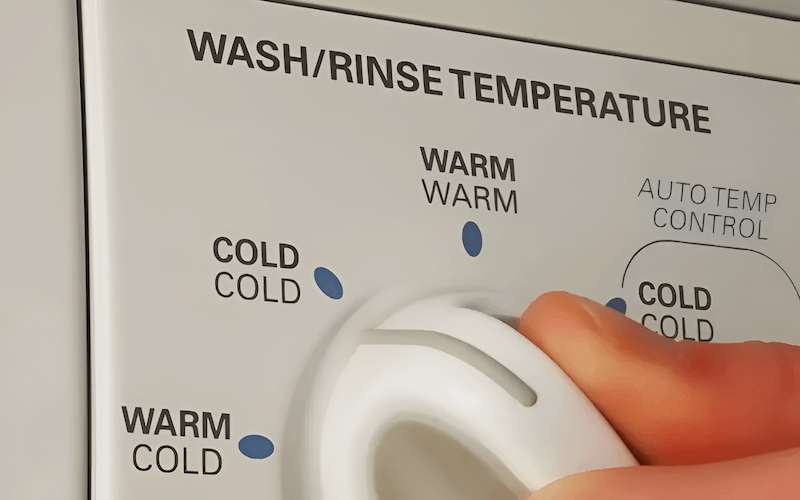
1.3 Reducing microfiber shedding
Microfiber shedding is a growing environmental concern. When synthetic fabrics are washed, tiny plastic particles (microfibers) break off and enter waterways. These microfibers pollute ecosystems and can even end up in our food chain.
Studies, and even recommendation of EPA, have shown that washing clothes in hot water increases microfiber shedding. Cold water washing, by being less abrasive, reduces the number of microfibers released, helping minimize your environmental impact.
1.4 Effective stain removal (for certain stains)
While hot water is often associated with better stain removal, this isn’t always the case. Certain stains, particularly those that are protein-based, can actually set with hot water. Here’s a list of stains that often respond better to cold water:
- Blood
- Sweat
- Dairy products (milk, ice cream, etc.)
- Many food-based stains.
2. The advantages of hot water washing
While cold water offers numerous benefits, hot water still holds its place in the laundry room for specific situations. Here’s where hot water truly shines:
2.1 Superior cleaning power
Hot water excels at tackling heavily soiled items. The higher temperature boosts the effectiveness of laundry detergents. Heat increases the solubility of many substances, meaning that dirt, oil, and grease are more easily dissolved and removed from fabrics. This is particularly important for items with significant grime or stubborn, oily stains.
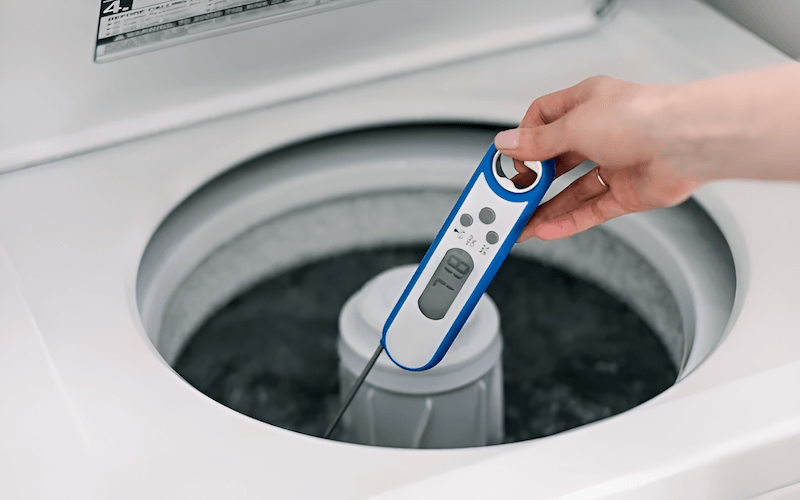
2.2 Sanitizing and disinfecting
This is perhaps the most crucial advantage of hot water. When hygiene is paramount, hot water (typically above 140°F/60°C) is necessary to kill bacteria, viruses, and other pathogens. This is essential for items like:
- Bedding and towels, especially during illness
- Cloth diapers
- Clothing worn by individuals with compromised immune systems
- Items that have come to contact with mold.
2.3 Best for certain fabrics and situations
While many fabrics thrive in cold water, some situations call for the power of hot water:
- Cotton whites: Hot water can help keep white cotton items bright and prevent yellowing.
- Heavily soiled items: As mentioned earlier, items with significant dirt, oil, or grease benefit from hot water’s cleaning power.
- Cold climates: In regions where tap water temperatures drop significantly during winter (below 40°F/4°C), hot water may be necessary for detergents to work effectively.
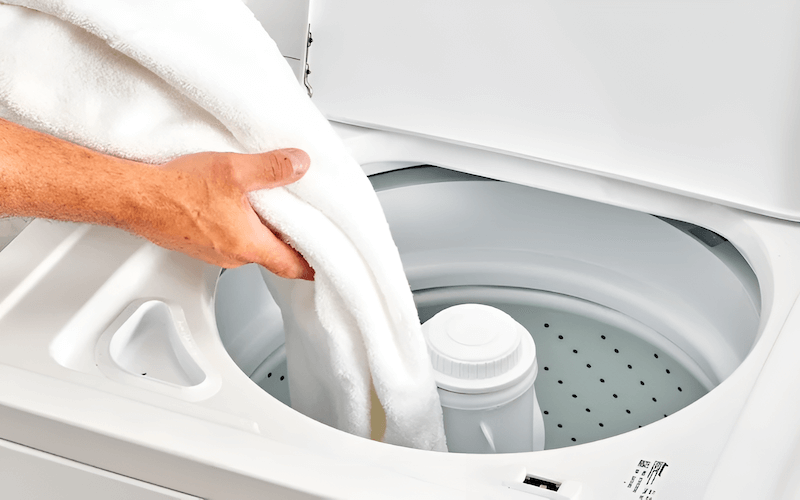
3. Choosing the right water temperature: A detailed guide
Knowing the benefits of both hot and cold water is a great start, but how do you decide which to use for a specific load? This section provides a comprehensive guide to help you make the right choice every time.
3.1 Reading fabric care labels
The first and most crucial step is to always consult the fabric care label on your garment. This label provides valuable information, including recommended washing instructions. Understanding the symbols is key:
Water Temperature Symbols: These symbols typically depict a washtub with dots or a number inside.
- One Dot: Cold water (around 65-85°F / 18-29°C)
- Two Dots: Warm water (around 105°F / 40°C)
- Three Dots: Hot water (around 140°F / 60°C or higher)
- Number: Show the maximum temperature of water to use
If there have “x” symbol that mean do not wash
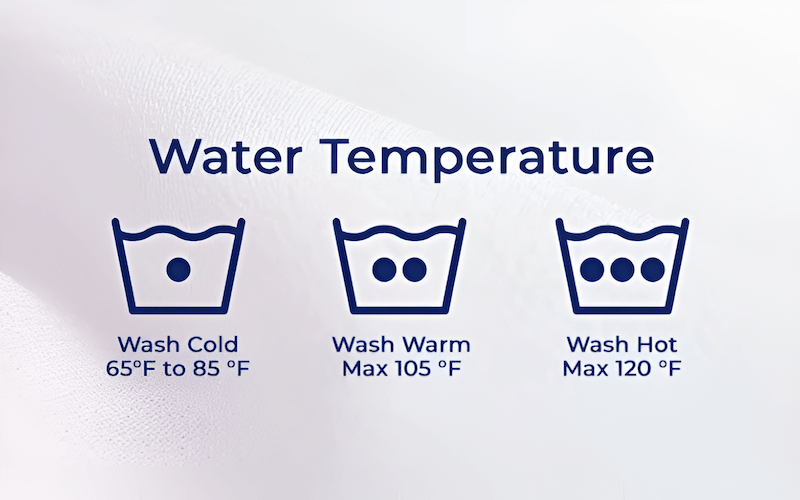
3.2 Fabric-specific recommendations
Here’s a quick guide to water temperature based on common fabric types:
- Cotton: Generally safe for hot water, especially for whites. However, colored cottons may fare better in warm or cold water to prevent fading.
- Polyester: Typically, warm water is suitable, but check the care label. Cold water is also often a safe option.
- Silk: Cold water is almost always recommended to protect this delicate fabric.
- Wool: Cold water is essential to prevent shrinkage.
- Linen: Check the care label; some linens can handle warm water, while others require cold.
- Synthetics (Nylon, Spandex, etc.): Warm water is generally acceptable, but cold water helps prevent damage and microfiber shedding.
- Delicates (Lace, Underwear, etc.): Cold water is the safest choice.
- Blends: Refer to the care label; the most delicate fiber in the blend usually dictates the recommended temperature.
3.3 Stain-specific recommendations
As previously mentioned, stain type plays a significant role:
- Oil-based stains (Grease, Makeup, etc.): Warm or hot water helps dissolve these stains.
- Protein-based stains (Blood, Sweat, Dairy): Cold water is crucial to prevent setting the stain.
- Tannin-based stains (Wine, Coffee, Tea): Start with cold water, then potentially move to warm if needed.
- Dye-based stains (Ink, Food coloring): Cold water is often recommended to prevent spreading.
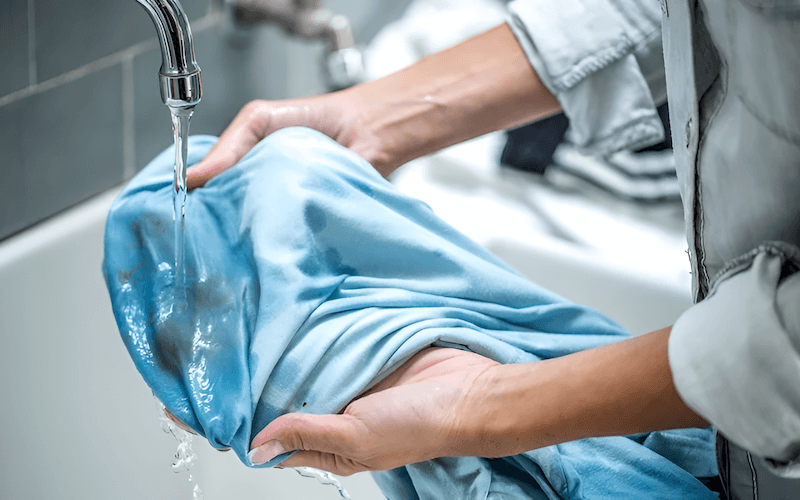
3.4 Considering water hardness
Water hardness, which refers to the mineral content of your water, can also impact laundry results. Hard water can reduce the effectiveness of detergents, making it harder to achieve a thorough clean, whether you use hot or cold water.
- What is it? Water hardness is primarily caused by calcium and magnesium minerals.
- How to test it: You can purchase water hardness test strips or contact your local water utility for information.
- Solutions: If you have hard water, consider using a water softener or adding a laundry booster designed for hard water conditions. This can improve detergent performance and prevent mineral buildup on your clothes.
4. Optimizing your laundry routine
Beyond choosing the right water temperature, there are other key factors that contribute to optimal laundry results. This section provides tips to further enhance your washing process.
4.1 Choosing the right detergent
Selecting the appropriate detergent is crucial for effective cleaning. While many detergents are designed for all temperatures, some are specifically formulated for cold water.
- Cold Water Detergents: These detergents contain enzymes that are activated at lower temperatures, ensuring effective cleaning even in cold water.
- Liquid vs. Powder: Liquid detergents generally dissolve better in cold water than powder detergents. Some powder detergents may leave residue on clothes if not properly dissolved.
4.2 Pre-treating stains
For stubborn stains, pre-treating is highly recommended. This gives the detergent a head start in breaking down the stain before the main wash cycle.
Methods:
- Soaking: Submerge the stained area in cold water (for protein-based stains) or warm water (for oil-based stains) for 30 minutes or longer.
- Applying Stain Remover: Use a commercial stain remover or a paste of baking soda and water. Apply directly to the stain and gently rub before washing.

4.3 Washing machine settings
Understanding your washing machine’s settings is key to tailoring the wash to your specific needs.
Washing Cycle:
- Normal: For everyday items and moderately soiled loads.
- Delicate: For delicate fabrics, use a gentle cycle with cold water.
- Heavy-Duty: For heavily soiled items, use a longer, more powerful cycle, often with warm or hot water.
Spin Cycle: A higher spin speed removes more water, reducing drying time, but can be harsher on delicate fabrics.
- Rinse Cycle: Ensure all detergent is removed from your clothes. An extra rinse cycle can be beneficial for people with sensitive skin.
- Load Size: Avoid overloading the machine, as this can prevent proper cleaning and rinsing.
- Water level: Match with the size of your load.
5. Related questions
Here are concise answers to some frequently asked questions about water temperature in laundry:
5.1 Can I use cold water for all my laundry?
While cold water is suitable for most laundry, it’s not ideal for everything. Heavily soiled items, items needing sanitization, and some specific fabrics require warm or hot water.
5.2 Does hot water shrink all clothes?
No. Hot water is more likely to shrink certain fabrics, particularly natural fibers like cotton and wool. Always check the care label.
5.3 What is the best water temperature for washing colored clothes?
Generally, cold or warm water is best for colored clothes to prevent fading. Hot water can cause colors to bleed and fade more quickly.
Read more:
Choosing between hot and cold water for laundry isn’t a one-size-fits-all answer. It’s about understanding the benefits of each, considering the fabric type, stain type, and desired outcome (cleaning vs. sanitizing).
By carefully reading care labels, making informed decisions about water temperature, and optimizing your laundry routine, you can achieve clean, fresh clothes while minimizing energy consumption and extending the life of your garments.
Visit our website https://mypacklove.com/ to explore our product options and request a quote. Contact us today to discuss your specific needs! Let us help you enhance your clothing care and branding efforts.






















